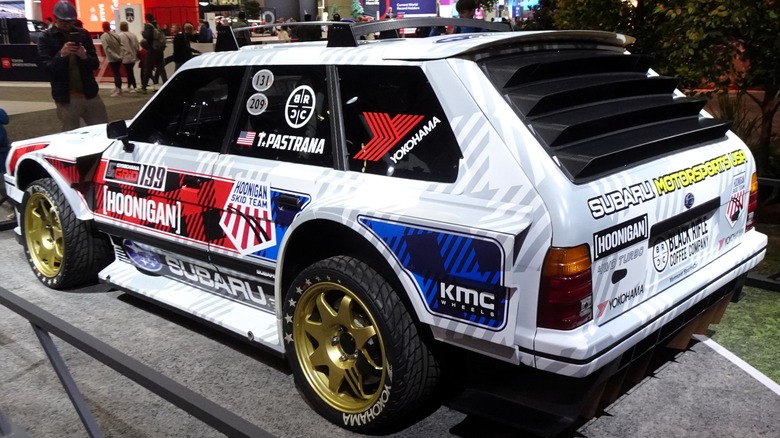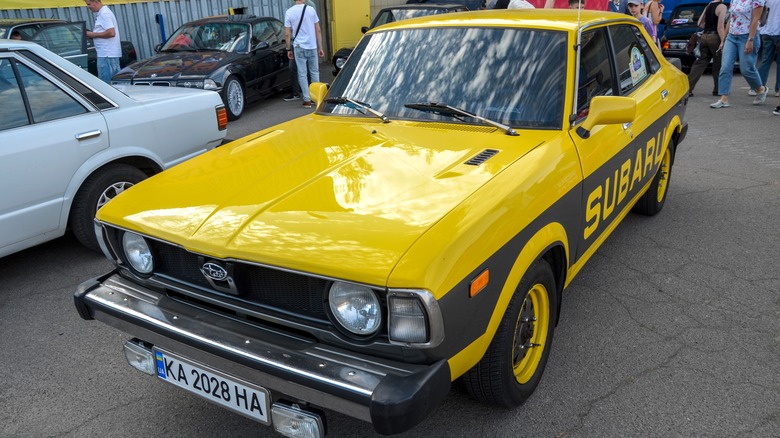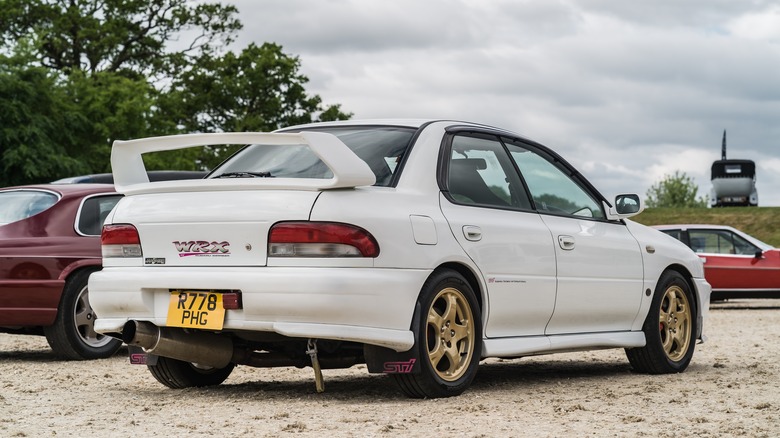What Was Subaru's First Rally Car?
Subaru's first steps into international rallying began with the Leone, a compact family car that would go on to define the brand's engineering DNA, and which is still considered one of the best vintage Subaru models from the 1970s. While the Leone originally launched in 1971 as a coupe and sedan, its significance grew in 1972 when Subaru introduced the Leone 4WD Station Wagon, which was the first mass-produced passenger car with four-wheel drive. Developed in response to a request from Japan's Tohoku Electric Company for a snow-capable utility vehicle, the Leone's selectable 4WD system proved ideal for rural and mountainous terrain.
While the company had dabbled in off-road motorsport earlier with the FF-1 in desert events like the Baja 500, it was the Leone that marked Subaru's entry into sanctioned rallying on a global stage. In 1980, Subaru entered the World Rally Championship (WRC) for the first time, fielding three versions of the Leone in Group A at the Safari Rally of Africa. The initiative was led by Noriyuki Koseki, who would later found Subaru Tecnica International (STI).
At the time, Subaru was still years away from the turbocharged icons it would later produce. But the Leone's performance and visibility in the WRC helped solidify the brand's commitment to rallying and to the use of boxer engines and all-wheel drive, two technologies that would go on to define the company's engineering identity.
Quirky, capable, and surprisingly quick
Though it never had the turbocharged bite of the Impreza WRX, the Leone Turbo 4WD was a bold step forward for 1980s-era Subaru. Powered by the EA82 1.8L flat-four with a baby turbo, it only made around 115 horsepower, but its charm lay in its engineering, not its output.
The Leone came with a 5-speed manual, a locking center differential, and even a low-range gear, all wrapped in a compact family wagon body. Some versions even featured adjustable ride height, allowing drivers to raise the car by several centimeters at the push of a button, which is perfect for tackling rougher terrain.
Inside, it was peak '80s: blue zigzag cloth seats, aircraft-style gauges, and a quirky driver-focused control layout that surrounded the wheel like a cockpit. But the driving experience was more than nostalgia. The Leone had a distinct boxer-engine growl, solid mid-range torque, and handling that surprised even seasoned reviewers, helped by a lightweight body and a manually selectable four-wheel drive system.
Marketed originally as a utility solution for Japan's mountainous regions and snowy climates, this was the first mass-produced AWD passenger car, and it sparked unexpected demand in North America and Europe. It wasn't fast, but it was capable, weird, and ahead of its time. And more importantly, it was the car that proved Subaru could make AWD not just functional, but fun. From remote service routes to WRC stages, the Leone paved the way.
From Leone to Legends: how Subaru built a rally dynasty
The Subaru Leone may have been the brand's first rally car, but it was only the beginning. The lessons learned in the 1980s, from snowy mountain roads to WRC stages, set the stage for what came next. In 1990, Subaru introduced the Legacy RS, featuring the now-iconic 2.0-liter EJ boxer engine, and certainly one of the best Subarus of all time. With Colin McRae behind the wheel, the Legacy RS won the British Rally Championship in 1991 and 1992, pushing Subaru from underdog to serious contender.
But the real breakthrough came in 1993 with the debut of the Subaru Impreza WRX. Shorter, sharper, and quicker than the Legacy, the Impreza became a rally icon almost overnight. Its first WRC start at the 1000 Lakes Rally marked the beginning of an era that would bring three WRC driver titles and three manufacturer championships. McRae, Richard Burns, and Petter Solberg all made history in Subaru's blue-and-gold livery.
It all traces back to the Leone. What started as a practical 4WD wagon built for snowy roads ended up defining Subaru's DNA. Boxer engines, all-wheel drive, and rally-bred engineering, Subaru's signature traits, were all born in the Leone and perfected in the cars that followed.


